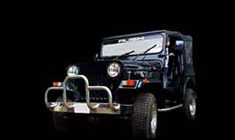News
Proper way to exit a highway and enter the service lane and vice-versa
Despite such rules, we are aware that 99% of the drivers do not know, or do not follow them, whether wilfully or out of sheer ignorance / negligence.
BHPian SS-Traveller recently shared this with other enthusiasts.
A BHPian who prefers to remain anonymous on this thread for personal reasons, sent me a PM asking for clarification regarding road rules and what to do, relating to exiting a highway into a service lane, and vice versa. His initial PM said:
I discovered that you're very knowledgeable about traffic rules. I have described a few traffic scenarios below. Could you please explain how one is supposed to exit or enter the highway in those cases? I would appreciate it if you could additionally include the Indian road rules applicable in each case.
I wrote back to him saying:
The scenarios you've described are important, but the answer & explanation for each scenario would be too long and time-consuming without diagrams and pictures/videos, which are difficult to incorporate in a PM.
I'd suggest you start a new thread in the Road Safety section, and I'll respond there when I get some time. Also, you'll get inputs from other people, and many more will benefit from the public thread.
This discussion would certainly benefit many thousands of folks reading this thread, so it would be ideal to discuss this in the public forum.
So the member sent me the following text and pictures (on Imgur), saying, Could you please quote the following and upload it on the Road Safety forum...
He writes:
I am writing to know the proper way to exit a highway and enter the service lane that runs parallel to it, and vice-versa. I have illustrated four possible scenarios here which I refer to as cases 1,2,3,4 below.
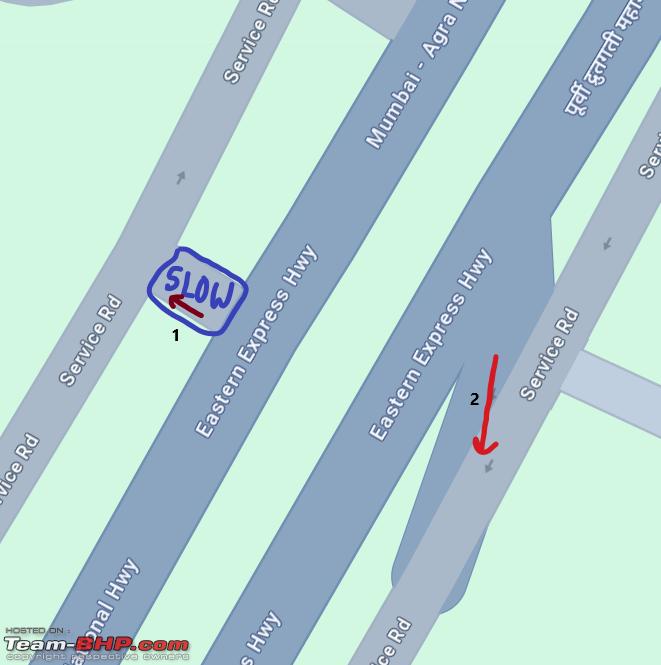

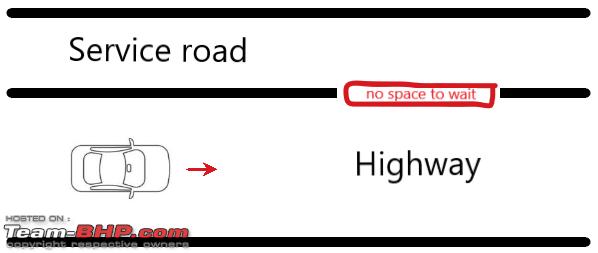

Short description of the cases:
- S-intersection
- Exit ramp
- Parallel service road with a small area to wait (illustrated in yellow)
- Same as above but without any area to wait.
Could you please answer the following questions with regard to the Driving Regulations under section 118 of the MV Act:
- Consider the area of road that connects the highway and the service road. For example, that piece of road would be the exit ramp in case (2) and the yellow region in case (3). The MV Act mentions that at intersections, if two roads are of the same category, the vehicle on the right has the right of way. In that regard, I would like to know if that piece of road is of the same category as the service lane or the highway. Please answer for each case.
- Continuing with the previous question, how does the law, and in particular, the Driving Regulations define those areas - are they intersections? Do regulations 9 (Precautions to be taken at intersections) and 15 (Merging in Traffic) apply? Please answer for each case.
- Consider case (1). There, the exit from the highway requires a dedicated left turn while the entry to the service road requires a dedicated right turn. However, in cases (3) and (4), the left/right turns are more subtle if not a left turn throughout until the steering is turned right at the last moment to straighten the vehicle: are those treated as turns or merging, or both? Would you say case (3) involves a left turn and then a right-turn or only a left turn, or neither?
- The MV Act mentions that vehicles on the right have the right of way at intersections when the roads are of the same category (reg. 15.2), that vehicles exiting a minor road and entering a major one will have the right of way if it's on the right (reg. 9.2) and the same Act also mentions that while taking a left-turn, the slow-moving traffic on the left has to be allowed (sub reg. 8.1.e). Consider cases (3) and (4) where the exit from the highway requires a continuous left-turn. If the service lane is uni-directional, don't the first two regulations contradict the last sub-regulation?
Section 15.2

Section 9.2
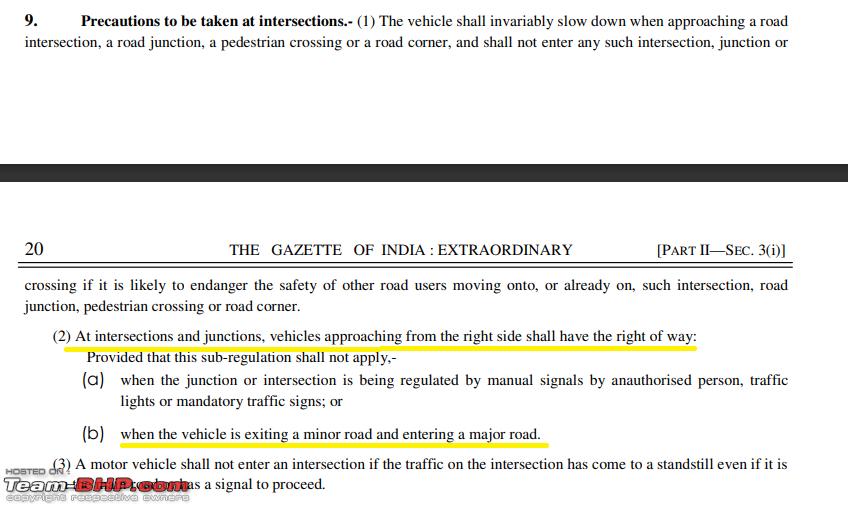
Section 8.1.e
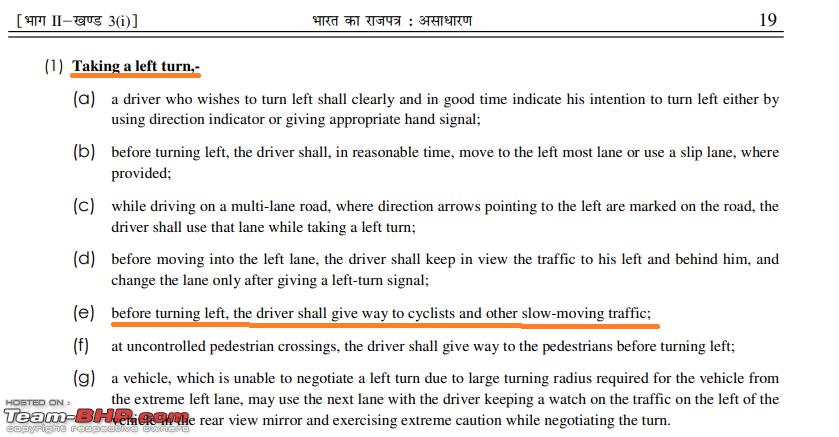
- Consider case (2). It's a straight exit ramp and one requires no turn as such when the service road is uni-directional. Which regulations of the MV Act describe the right of way here (especially if the service lane is not wide enough)?
- Continuing with the previous question, for each of the four cases, consider the service roads to be uni-directional. Who then has the right of way while exiting the highway and entering the service road, and vice versa?
- Ditto above question, but consider the roads to be bi-directional.
Just to reiterate, please mention the relevant regulation (or the lack of it) from the MV Act in each answer.
This is inspired by a similar post made by a fellow T-BHPian @Ayson.
Thank you.
Now, I do know the rules (which are broadly similar across most countries), but have not memorized the specific sections and subsections of the Motor Vehicles (Driving) Regulations, 2017.
However, despite such rules existing, we are also aware that 99% of drivers do not know, or do not follow them, whether wilfully or out of sheer ignorance / negligence. In that situation, highlighting the best practices that can be followed in the name of road safety and to avoid crashes in such situations, would also be the purpose of this thread.
Therefore, let the discussions begin.
Update
So here's my input on how to handle Case 1 (which has been described by the BHPian asking, as an S-Intersection), irrespective of (but not breaking) anything the MVDR Rules might say about how to negotiate this.

In my experience, this kind of H-shaped connection to the service road from the highway usually means the service road is a both-way road, and both up and down traffic would be present on it.
For the red car to exit the highway, it needs to be in the left lane. At Position A, the driver should be:
- Scanning the service road to watch for the volume and direction of traffic in the service road across the green verge;
- Checking his mirrors for traffic coming up fast behind him
- Switching on his left indicator (approximately 300m before the turn);
- Slowing down; and
- Pulling his car over to the extreme left of the left lane (or into the emergency lane, if there is one on the highway), to reach Position B.
From Position B, he executes a left turn to get to Position C, where he:
- Stops - it is important to do that, because one is slowing down to lower speeds after coming off a fast drive on the highway, and reorientation is necessary;
- Observes traffic flow on the service road;
- Turns on his indicator for the intended turn;
- Then proceeds to join the service road in whichever direction he intends to travel, once the road is clear.
Just make sure first that the service road is not uni-directional. Don't take my words as the gospel truth, that such connectors indicate a both-way road!
We'll discuss the other scenarios in a few days…
Here's what BHPian Secretariat had to say about the matter:
I humbly submit that the rules relating to exiting the highway are not relevant in India. It is futile to expect adherence and therefore we can leave the rule book to one side and consider what is practically the safest way to exit the highway. My suggested approach is:
Preparation
I am assuming that preparatory action has been taken well in advance of the manoeuvre - checking all mirrors, moving to the leftmost lane at least 500 (maybe more) metres before the exit, switching the left turn signal on, gently lowering speed while constantly checking the IRVM to see whether any vehicles are coming at speed behind.
Manoeuvre
In the case of 1,2 and 3, if it is safe to exit (no vehicles in the vicinity), then exit at a safe speed, go left on the service road and cancel the turn signal. But it is a rare situation when there would be no vehicles in the vicinity. A particular lookout is required for vehicles (especially two-wheelers) coming on the wrong side of the service road - it is universal in India that traffic flows both sides on a service road. Another danger is a parked vehicle on the service road right at the highway exit; a common occurrence. It is therefore almost safer to gently crawl or even stop at the wait areas (in cases 1, 2 and 3) to check all this before entering the service road.
The riskiest is Case 4, where there is no waiting area. In such a case I would suggest checking mirrors that there is no vehicle coming behind as well as no slow-moving truck in the rightmost lane (a faster vehicle coming behind in the rightmost lane WILL swing left to overtake the truck. If there are no such vehicles for a good distance, then the same manoeuvre as for Cases 1,2,3 can be done I suggest. But if there are vehicles, then it is safer to skip the turning and go straight on. The riskiest option would be to stop on the highway left most lane waiting for the service road to clear or to dart into the service road. It is an entirely moot point that such exits should not be there in the first place.
I also suggest being on the watchout for two-wheelers coming on the wrong side of the highway and wanting to enter the service road and continue on the wrong side (basically the exact opposite of what we are trying to do). Service roads near villages or towns, which are the bulk of service roads in any case, are very likely to have this problem.
Here's what BHPian NomadSK had to say about the matter:
Nice thread, knowledge is indeed power here’s my 2 paisa:
Wherever merging and exiting is supposed to be done, there should be a sign for Give way. Unfortunately, I have never seen a “give way” sign on our roads, then how come we can expect a common Joe to know the rules of merging and exiting? Even getting a DL is a farce. (Tough for people to understand the basic rules of the game) Things become quite easy if there are proper signboards. Trust me till I was driving in India, I never knew that I had to completely stop at a stop sign (I’m talking about the time some 10 years ago. New expressways might have, but cities, I don’t think so), cause I never saw one. And stopping at intersections/junctions etc etc is taken as a sign of weakness.
In general, We cannot give a hard copy of standard to a guy who’s not educated enough to understand the laws. That’s why there are road signages.
The same guy who asked you the doubts would have been clear, if road signages and marking would have been as per the standard and he would be seeing it while growing up and while driving day in and day out. Practical knowledge goes into the subconscious mind forever. Else wrong habits get inculcated which are difficult to let go of.
I think in our country, all these rules come into play only and only when someone gets involved in a wreck and we need to point fingers or blame someone. Till then no one in general gives a two hoot about it.
Here's what BHPian Redex had to say about the matter:
The biggest problem is very poor road design in India. In the U.K. entry and exit lanes on highways and motorways are well marked. Signage begins 1.6 km before the junction, then 700 metres, 500 metres, with the final 300 metres counting down with signs every 100 metres. The entry/exit lanes (slip roads) are designed to allow plenty of time and distance to safely exit or merge onto the highway.
The slip road onto the highway is really an acceleration lane allowing you to match speed with the highway traffic before joining. Likewise, the exit lane is a deceleration lane meaning that you leave the highway at the same speed and then gradually slow down.
Most dual carriageways and motorways have a speed limit of 96 km/h for trucks and buses and 112 km/h for cars and 2-wheelers (except Scotland).
I have made a rough conversion from miles to kms so the figures are not exact.
Check out BHPian comments for more insights and information.



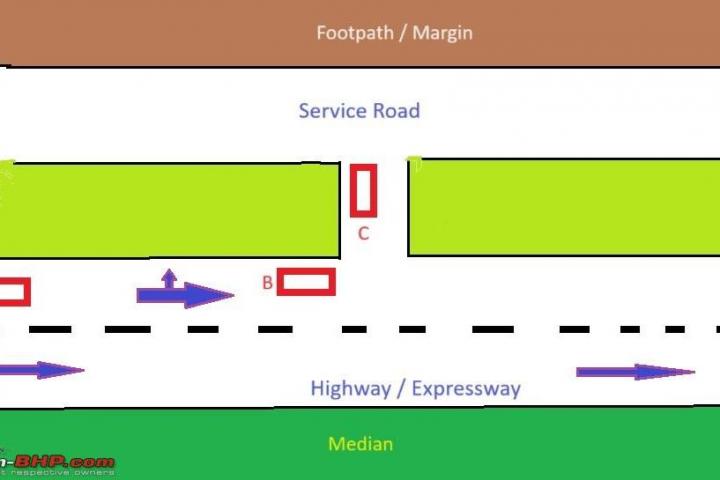

.jpg)









